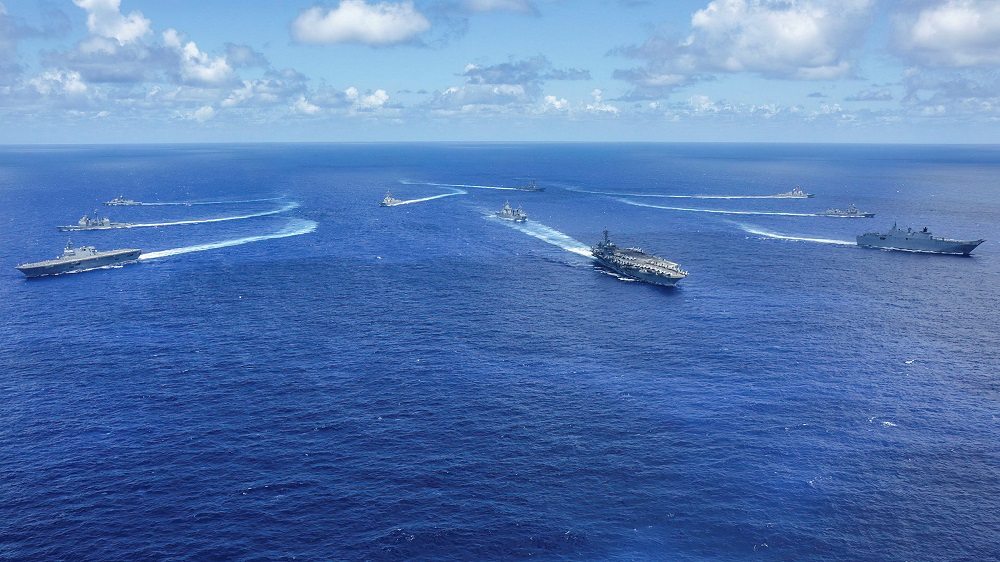
Here’s the ‘darkening’ security outlook for the Indo-Pacific for 2023.
The US worries, ‘Will China let us have peace?’
Japan finds itself at the security crossroads due to ‘the resurgence of great power competition’.
Canada frets that the Washington consensus on ‘the existential threat’ from China means that ‘Canada’s options to engage with China are limited’.
India seeks a new global balance because ‘the Sino-American partnership that allowed [Asia] to develop and progress in peace for almost five decades has collapsed’.
‘Dubious of America’s long term strategic commitment’ to Southeast Asia, Thailand ‘is leaning closer and closer toward China’.
Singapore sees the US girding for ‘a concerted effort with its major allies to degrade China’s capabilities to challenge America’s global pre-eminence’.
For Vietnam, the fraught regional order will be marked by ‘competition instead of cooperation’, ‘polarisation instead of globalisation’, and ‘decoupling instead of integration’.
A voice from Myanmar that can’t be named speaks of two years of ‘turmoil and conflict’ following the military coup, the junta’s ‘escalating oppression’ and the ‘spontaneous courage’ of the people.
Mongolia has ‘giants on every horizon’.
The line from New Zealand is, ‘It’s grim out there.’
The national perspectives are from the Regional security outlook 2023, published by the Council for Security Cooperation in the Asia Pacific. CSCAP is the unofficial ‘track two’ counterpart to the official ‘track one’ work of the ASEAN Regional Forum, the East Asia Summit and the ASEAN Defence Ministers—Plus Forum.
The outlook’s editor, Ron Huisken, heads his introduction, ‘Open season on the rules-based order’, noting that for nearly two decades ‘the international community had sensed the gradual but relentless erosion of confidence in the principles, conventions, and processes designed to foster stability and peace’. CSCAP’s annual survey has tracked that trend, along with ‘the spectacular surge in China’s strategic weight toward parity with the US’.
A notable gap in this year’s edition: for the first time in 15 years, there’s no chapter offering a view from China. The absence suggests that China’s second track is waiting for the first track to draw conclusions and decide the fresh line from Xi Jinping’s summitry at the G20 and APEC. Perhaps Xi will want warmer words and less warrior wolfing.
The chance for new thoughts underlines Huisken’s call to ‘simply lower the barriers to easier communication. All parties must project a willingness to learn and to understand.’
A similar point came from last week’s Australia–US ministerial meeting in Washington, which emphasised ‘the importance of all countries managing strategic competition responsibly’. The US and Australia pledged to ‘work together to ensure competition does not escalate into conflict’ and said they ‘look to the People’s Republic of China to do the same and plan to engage Beijing on risk reduction and transparency measures’.
Washington wants to ‘build a floor’ with China and define some ‘red lines’. Canberra has cracked the diplomatic freeze and wants Beijing to keep talking to ‘stabilise’ relations.
AUSMIN offers the communiqué-language version of apprehension, as the US and Australia pledge defence and security cooperation ‘to deter aggression, counter coercion, and make space for sovereign decision making’.
The Labor government’s response to ‘uncertain and more precarious’ times is a stronger alignment with the US. Deputy Prime Minister and Defence Minister Richard Marles says the strategic landscape ‘is as complex and precarious as it’s been at any point really since the end of the Second World War’. The alliance, he says, has ‘never been more important’ and has ‘never been in better shape, and that’s a big thing to say because the alliance has always been in very good shape’.
It’ll be difficult to get a Laborite as enthusiastic and as knowledgeable about the alliance as Kim Beazley, but Marles may be that man, as he avers: ‘Australia’s most important relationship is its alliance with the United States. It is essential to our worldview, it is completely central to our national security.’
Foreign Minister Penny Wong pointed to three areas where Australia collaboration with the US ‘has a different approach and an enhanced emphasis’: action on climate change; a focus on Southeast Asia and the importance of ASEAN; and the South Pacific.
No recent AUSMIN communiqué has devoted as much wordage to the South Pacific, as the US starts to build the sinews to do more lifting in the region.
Joe Biden’s administration has sent a big ‘We’re back!’ message to the islands, holding its first summit with South Pacific leaders in Washington in September. AUSMIN offers detail. The communiqué promised a ‘redoubled’ commitment to working with the islands, guided by Pacific priorities of climate change, resilient infrastructure, maritime security, dealing with disasters and supporting the Pacific Islands Forum.
The US offers more diplomatic missions, the return of Peace Corps volunteers and extra maritime surveillance, and the US Coast Guard promises training for maritime security to ‘enhance the benefits the Pacific Islands derive from the Australian-gifted Guardian-class Patrol Boat fleet’. The statement said the US and Australia would ‘do more to dispose of unexploded ordnance’ from World War II that still threatens nine island nations.
The US can no longer leave Melanesia and Polynesia to Australia and New Zealand, a division of responsibilities that worked well for 50 years.
Australia wants the US back in the game in the South Pacific, because China has changed the game. The outlook for great-power competition in the Indo-Pacific flows through to more contest in the South Pacific.

